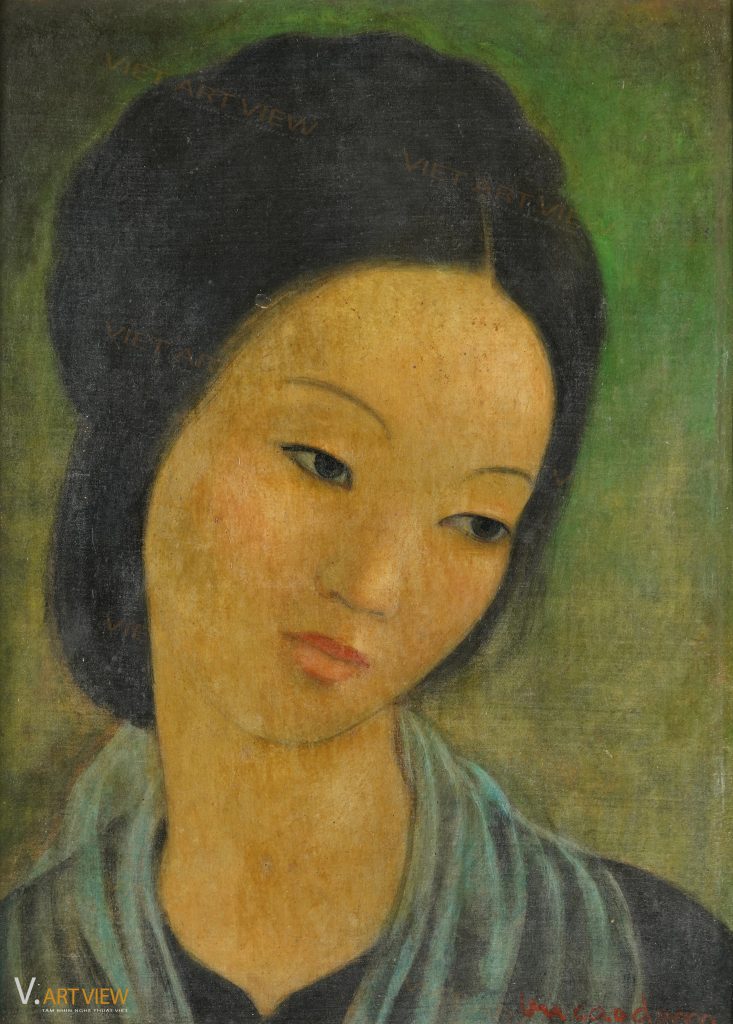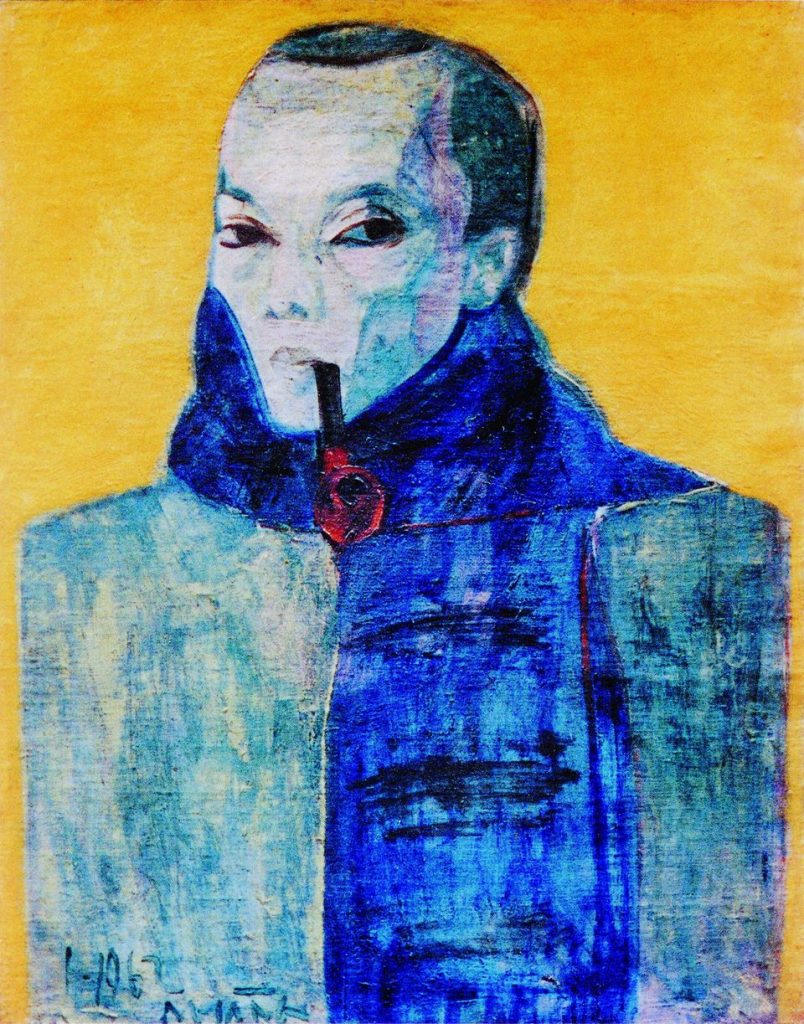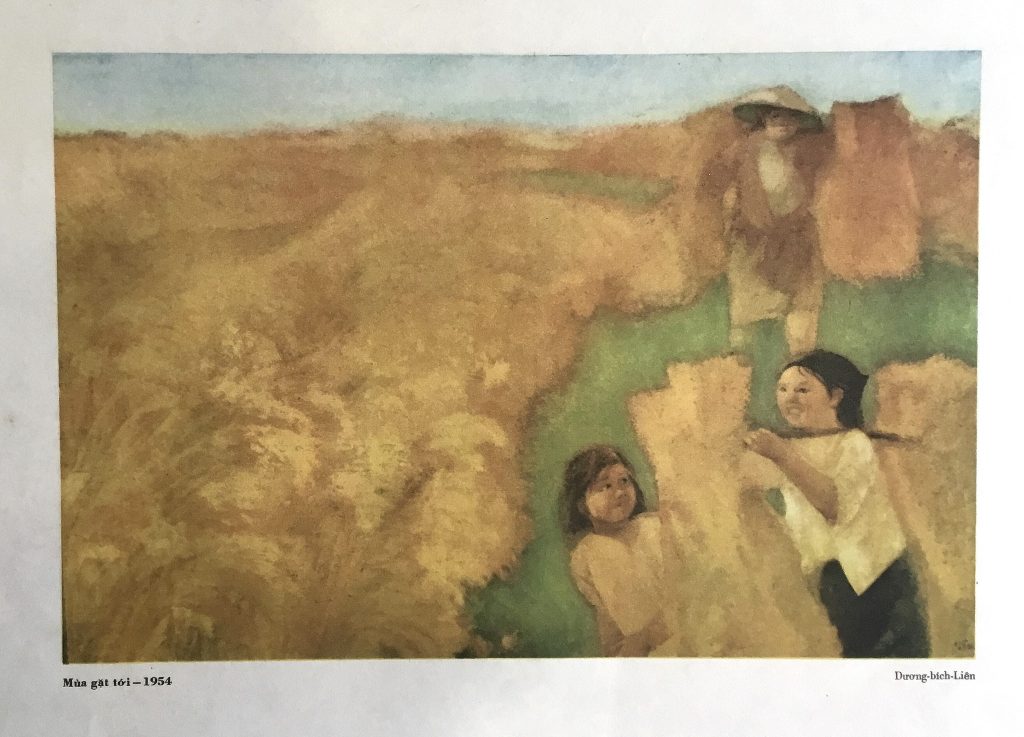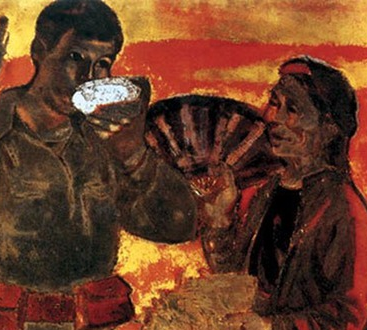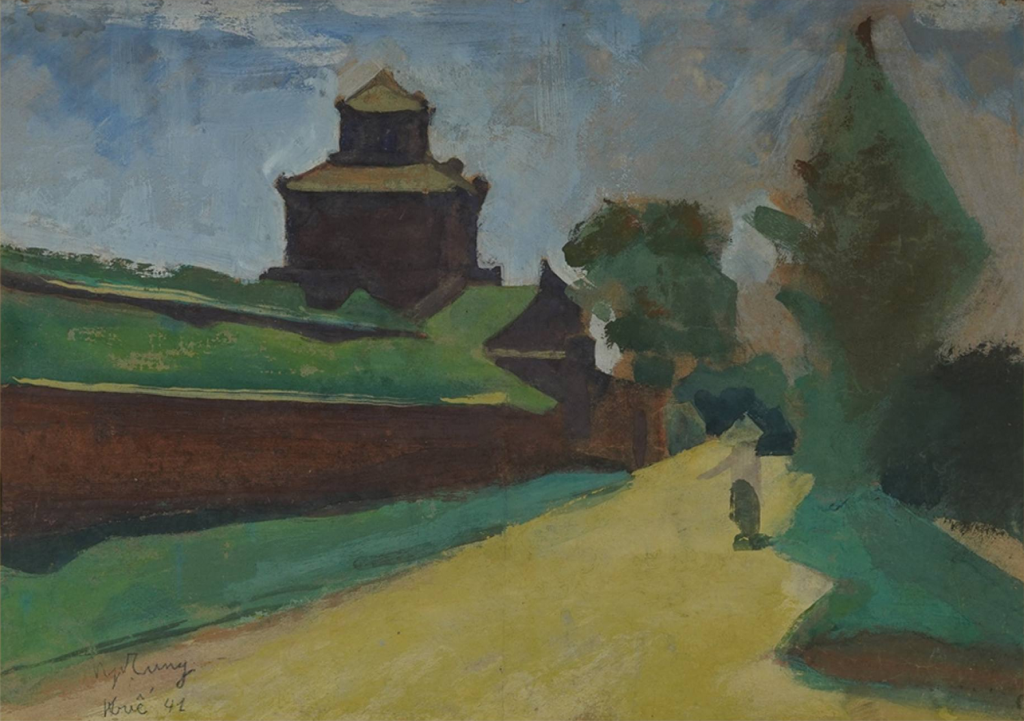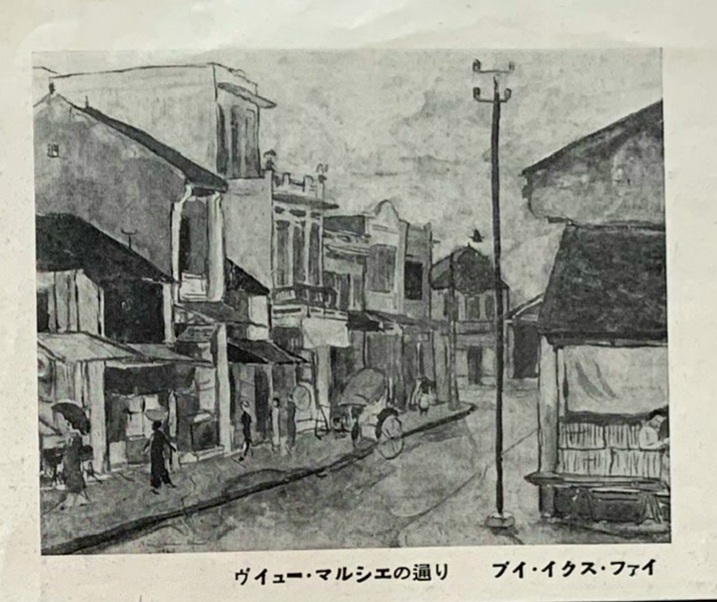Certainly, this is a landscape with the pagoda laid on a large space, included both plain and mountain, ponds, farms, villages, but we’re not sure about the site and the name of the pagoda.
The ancient pagoda painted here basically has many specifications similar to ‘chùa Thầy’ (Thay pagoda); in Sài Sơn commune, Quốc Oai district, in the former Hà Tây province (now part of Hà Nội city); where is a place that has the most famous beautiful scenery and architecture in the North, has been fondly depicted by many artists, especially by artists work in lacquer.
Scenery of the painting has a typical structure of limestone mountains, and some architectural units like water house and two tiled bridges, that we only see both in ‘chùa Thầy’. The natural scenery and the overall layout of the pagoda depicted in the painting mostly are the same as ‘chùa Thầy’.
Perhaps the reason why we are most confused when determining the geographical location and name of the pagoda we are seeing in this painting is that the artist who painted this, was an artist of the South, and maybe he only worked totally in the South, however we still know that the reason seems to lack load, especially in the field of art. In other way, if said that this is the painting of Thầy pagoda’s scenery, at least it’s almost true.

According to a document printed in 1970 by Phạm Công Luận — a most knowledgeable researcher in fine art of the South, provide: Mr Trương Văn Thanh, the artist of this painting — was born on March 18, 1918, in Tân–Thuận–Đông, Sa Đéc (of Vĩnh Long province at that time), “works in lacquer; currently the director of Lacquer fine arts Workshop (minor technology) Trương Văn Thanh, residing at 52 Phạm Hồng Thái, Sài Gòn”.
Also according to the above document, Mr Trương Văn Thanh “studied at the Fine Arts School of Pottery, Lacquer and Sculpture Bình Dương, Thủ Dầu Một (4 years); specializes in manufacturing cabinets, tables, chairs, paintings, lacquer decorative gifts; 1940, Thanh & Lễ lacquer workshop was established, Bình Dương”.
About the “achievements of activities” of Mr Trương Văn Thanh, the above document written: “treasurer of Nam Việt Decorative Painting Union. Member of Vietnam Cultural Association. Member of Painting and Sculpture, Unified Communion of Vietnam Buddhist Artists. Member of Vietnam Red Cross Society. Member of the Buddhist Union of Huệ Quang Charity”.
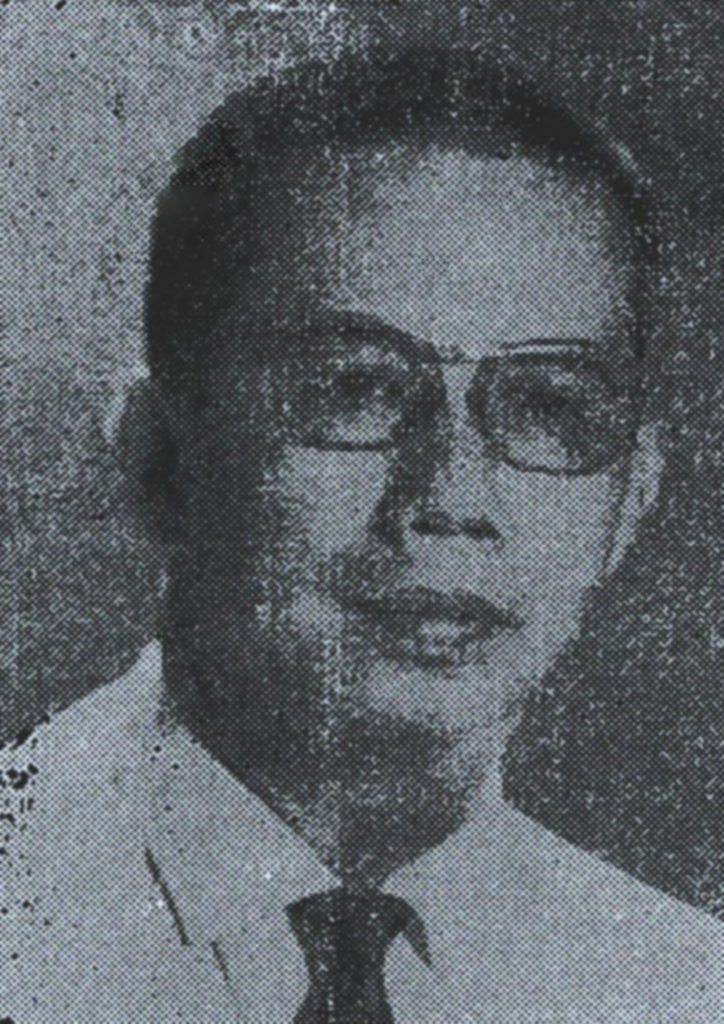
Portrait photo of artist Trương Văn Thanh (1918 – ?)
Thus, it can be said that Mr Trương Văn Thanh is a painter specializing in decoration and decorative painting. And his painting we’re seeing here is a decorative painting artwork. Besides, it seems that the look with the eyes of a Buddhist who follows the Charity like him — has created a way to express quite particularly in landscapes of Buddhist spirit — compared to many other artists who paint the same subject.
It seems that unlike Vietnamese silk paintings, which start from showing social life or scenes of daily life — Vietnamese lacquer paintings, in fact, starting from the landscape genre (such as the first experiment of native paint by Lê Phổ, “bụi tre bóng nước” painted in 1930, titled “Scenery of Tonkin”; or the screen painted scene of “shadow of bamboo in the water” the first lacquer artwork can be called as Vietnam lacquer painting was painted by Trần Quang Trân in 1932). Some lacquer artworks of the early period by Phạm Hậu or Nguyễn Gia Trí are landscapes too, with pagodas, especially ‘chùa Thầy’ (Thầy pagoda).
In general, in terms of genre or subject, Vietnam lacquer painting goes from landscapes to legends and anecdotes; and from here comes to the image (especially image of a young woman), then develops into realism and abstract. Vietnamese artists’ inspiration of scenery in general, especially artists work in lacquer in particular, perhaps because of that, almost never lessened and decreased.

Trương Văn Thanh (1918 – ?) Scenery of countryside and the ancient pagoda. 1950. Lacquer. 50 x 80 cm.
Trương Văn Thanh was born in 1918. That means he belongs to the generation of artists and decorators who grew up in the period, which Vietnam lacquer painting had finished the beginning steps and achieved the brilliant heights since 40s of the last century. In the South, right since those years, there were a number of talented masters of lacquer who graduated from Fine Arts College of Indochina; returned from Hà Nội, such as Trần Hà, Ủ Văn An, Lê Yên, etc — brought a fresh vitality of painting to lacquer art movement in the South, not only able to create a form of painting or decorative painting which carried the characteristic of the South, by material of lacquer, but also contributed to promote and improve the aesthetic taste of the fine lacquer industry, which has a long tradition in the South.
Had studied in lacquer at Fine Arts School of Thủ Dầu Một — the first art school in Indochina during the French colonial period, established in 1901 — basically, Trương Văn Thanh’s concepts and skills belong to the style of classical laque unie, which means only use the traditional materials, or traditional materials in new form, transform them into rich, exotic colors, qualities just using paint of shiny brown, black, vermillion, gold, silver, eggshell different form laque claire style that recently appeared since the early of 1940s.
Although don’t know much about Trương Văn Thanh’s works, with only this painting we’re seeing here, it can be said that he was a master. He created figures in a very simple way, didn’t pay much attention to details, especially with architectures. Scenery of the painting kept appearing hidden in the evening light, with the layers of thick, soft paint, full of ‘soil and wood’ quality and russet brown, light with dark, dark with light, creating an unreal atmosphere as if condensed in a precious and clear amber block.
What the painting brings to viewers, is perhaps a contemplation. If speaking in the spirit of Zen, that can be considered full, when people no longer bother thinking about the past, nor bother thinking about the future; they’re just turning inside themselves, in a moment of ‘silence’, tranquillity — in front of Buddha’s door.
Currently, the year of death and the place of death of artist Trương Văn Thanh have not been determined. His paintings seem to be very few. In studies of painting in the South, his name seems to have not been mentioned, either, perhaps because he’s already been very famous as a creator and producer of crafts, lacquerware, with the brilliant ‘Thanh & Lễ’ brand of a glorious era that can hardly be forgotten.
With this artwork, a painting that we can temporarily name ‘Scenery of countryside and the ancient pagoda’, we know more about an artist, a personality in lacquer art with bold temperament and general characteristics of painting and decorative painting in the South.
By art critic Quang Việt
Copyright belongs to Viet Art View


